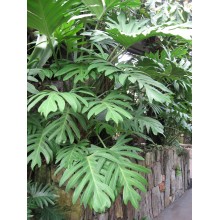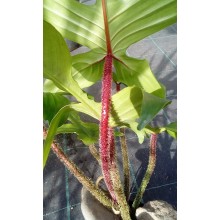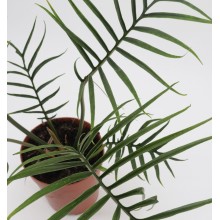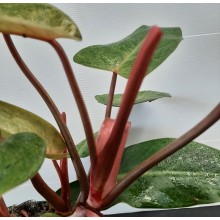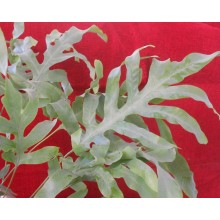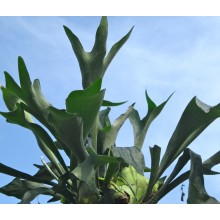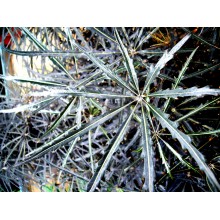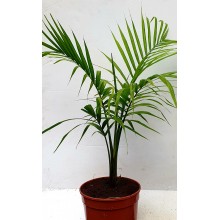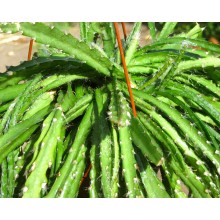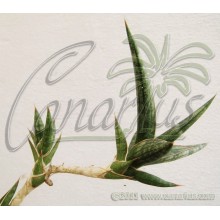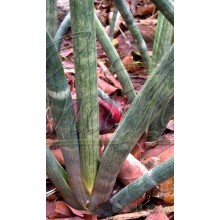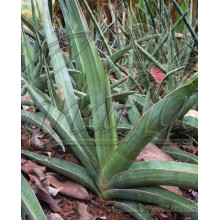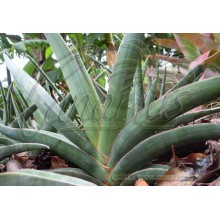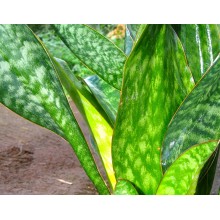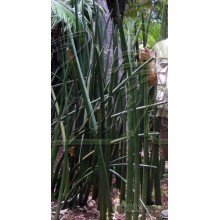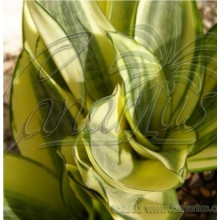Plantes d'intérieur Il y a 199 produits.

Ceci est notre sélection de plantes qui peuvent vivre dans votre maison, en tant que "plantes d'intérieur". Ces espèces difficiles à trouver sont toutes très différentes, mais elles peuvent tous être cultivées dans votre maison. Certains peuvent avoir besoin de lumière très faible et quelques autres pourraient avoir besoin de d'un peu de soleil à partir d'une fenêtre. Les palmiers, broméliacées, cordylines et aspidistras ne devraient jamais se dessécher. D'autre part, les sansevières, Hoyas et Rhipsalis ont besoin de moins d'eau et peuvent même survivre à la sécheresse.
-
Philodendron pedatum 'Quercifolium'
Philodendron pedatum 'Quercifolium'
This philo with excitingly thin pinnate foliage is possibly a clone of the variable species Philodendron pedatum, selected for the particularly narrow lobes.
36,20 € -
Philodendron pinnatifidum
Philodendron pinnatifidum
Ornamental philodendron from Venezuela and NE Brazil. It is reminiscent of P. selloum but it is more compact and tidy, with thicker, stiffer leaves and show reddish spots on the leafstalks. Just like selloum,it wants high ligth
54,50 € -
Philodendron reneauxii
Philodendron reneauxii
This is a rather different-looking, frost-tolerant Philodendron with oval leaves held on tall petioles. The stem creeps on the ground and does not like to climb. Leaf stalks grow vertically to 30-60 cm, holding leathery glossy leaves. Philodendron reneauxii is uncommon in collections, but it is a winner in cool to cold conditions.
34,20 € -
Philodendron tortum
Philodendron tortum
Philodendron tortum is an epiphytic climber, found in a wide part of Amazonia, always up on tree trunks. It stands out in collections because its leaf blades are deeply pinnatifid, "skeleton-like", glossy dark green above, and pale green below, with a remarkable midrib. It does not climb fast and in cultivation easily stays bushy.
58,00 € -
Philodendron x 'BGB' - Big Glorious Bastard
Philodendron x 'BGB' - Big Glorious Bastard
This is a hybrid climbing Philodendron, with exciting leaves. BGB is a fancy name meaning Big Glorious Bastard (with a mix of references to its hybrid origin,to its P. gloriosum parent and to the movie "Inglorious bastards" It is a cross of Philodendron gloriosum and Philodendron giganteum.
70,00 € -
Philodendron x 'Painted Lady'
Philodendron x 'Painted Lady'
Colourful variegated philo. 'Painted Lady' it is not new, while it is a "classic" successful hybrid with lots of pink-red colour on stems and glossy yellow streaked leaves.
58,40 € -
Phlebodium aureum 'Mandaianum'
Phlebodium aureum 'Mandaianum'
A blue fern from America, with large wide fronds growing from a creeping stem. It becomes even showier when the spores show up with a bright orange colour.
13,20 € -
Platycerium bifurcatum - Elkhorn Fern
Platycerium bifurcatum - Elkhorn Fern
"Elkhorn ferns" or "staghorn ferns" naturally grow on tree trunks as epiphytes. This species is native to Oceania and tolerates almost-freezing temperatures, so it can be grown outdoors in sheltered areas of the Mediterranean. We offer a large multi-headed plant grown in a hanging basket. If you divide it, you can make 2 or 3 large plants and a few more...
27,60 € -
Plerandra elegantissima
Plerandra elegantissima
Very exotic small tree native to New Caledonia. Few palm-like branches hold large coppery red to dark green leaves with toothed edges. We offer sun-hardened plants, a perfect people-stopper for the coastal Mediterrean garden.
26,50 € -
Ravenea rivularis
Ravenea rivularis
Popular feather palm native to river borders of Southern Madagascar, easily grown in the Mediterranean.
53,00 € -
Sansevieria ballyi 12681
Sansevieria ballyi 12681
One mature rosette, 5-8 cm diameter. A miniature creeping Sansevieria, with spiky tight rosettes on stolons. This "Bally 12681" from Kenya is surely the smallest and the cutest of all the species! Easy and fast growing. Good for terrariums and for hanging baskets.
17,20 € -
Sansevieria cylindrica Banded Leaves
Sansevieria cylindrica Banded Leaves
NEW ! Large head with leaves of 30-40 cm - This species has cylindrical smooth leaves with a green-gray banding.Old plants in the ground can reach 1-2 m in height.
6,95 € 13,90 €Prix réduit ! -
Sansevieria ehrenbergii
Sansevieria ehrenbergii
30-40 cm wide. This is a form with green long leaves, originating from Ethiopia or Eritrea. There are some similar plants in Somalia with shorter grayer leaves. Fan-shaped succulent with distichously arrangedthick leaves, of a bright blue-green. Slow growing and still very uncommon in the trade.
9,25 € 18,50 €Prix réduit ! -
Sansevieria ehrenbergii - Large Plant
Sansevieria ehrenbergii - Large Plant
Giant Plant: Perfect 60-70 cm wide fan - Form with green long leaves, probably originating from Ethiopia or Eritrea of this spectacular fan-succulent with thick blue-green leaves. Seldomoffered for sale. Slow growing.,
27,00 € 54,00 €Prix réduit ! -
Sansevieria masoniana
Sansevieria masoniana
Elegant sansevieria with large wide mottled leaves. It is native to Zaire and was described in the year 2000. Single or paired leaves rise from a thick, underground rhizome.
17,20 € -
Sansevieria parva
Sansevieria parva
NEW ! - Small rooted clump - "Parva" means "small"! Tiny stoloniferous species, eventually forming a carpet or filling ahanging basket. Native to cooler mountains of Rwanda, Uganda andKenya, it is probably the hardiest of the Sansevierias.
10,70 € -
Sansevieria stuckyi
Sansevieria stuckyi
A huge clump of Green Elephant Tusks: stiff, upright cylindrical leaves up to 2 m tall. This is an impressive species from Tropical East Africa. The largest of all sansevierias. It can grow indoors in a large pot, in bright light. We ship a 40-60 cm plant, bare-rooted.
16,30 € -
Sansevieria trifasciata cv Golden Hahnii
Sansevieria trifasciata cv Golden Hahnii
NEW ! - Cont. 8-10 cm. The most sought after of all the “Hahnii”. Thin, small, yellow, semi translucent leaves with a wide, central green band. Its ample variegation makes this plant the most delicate of the series: better grown indoor in a warm,
10,80 €
Pour le moment, il ya peu de produits dans cette catégorie Plantes d'intérieur

















